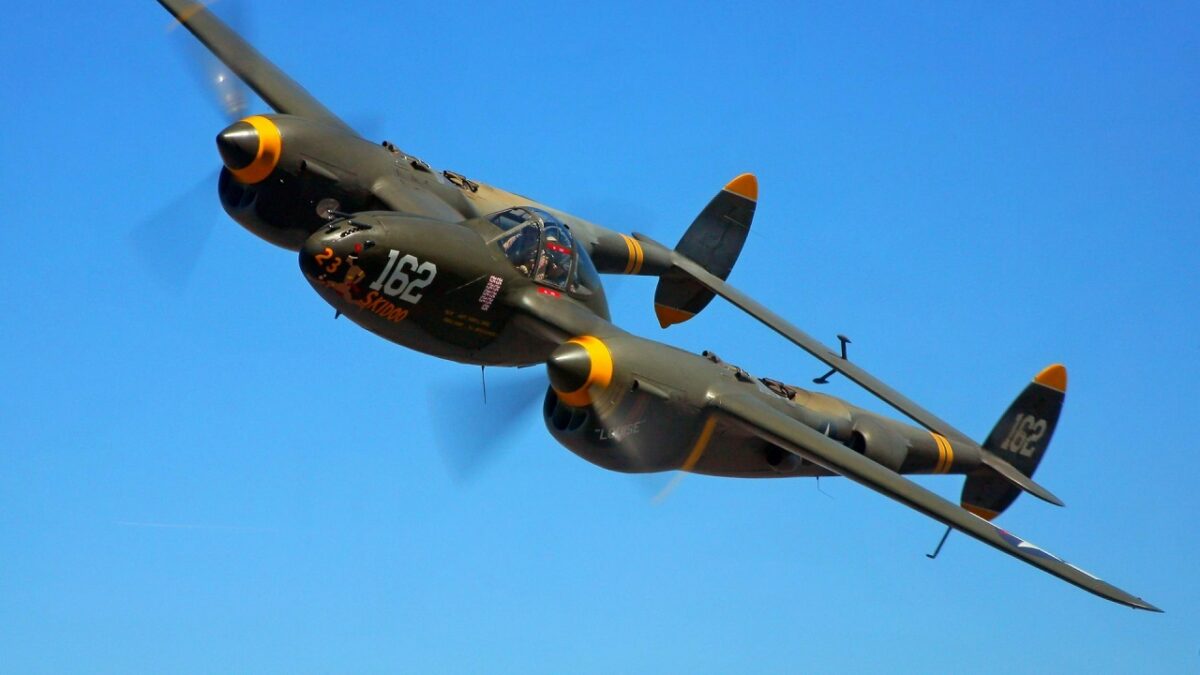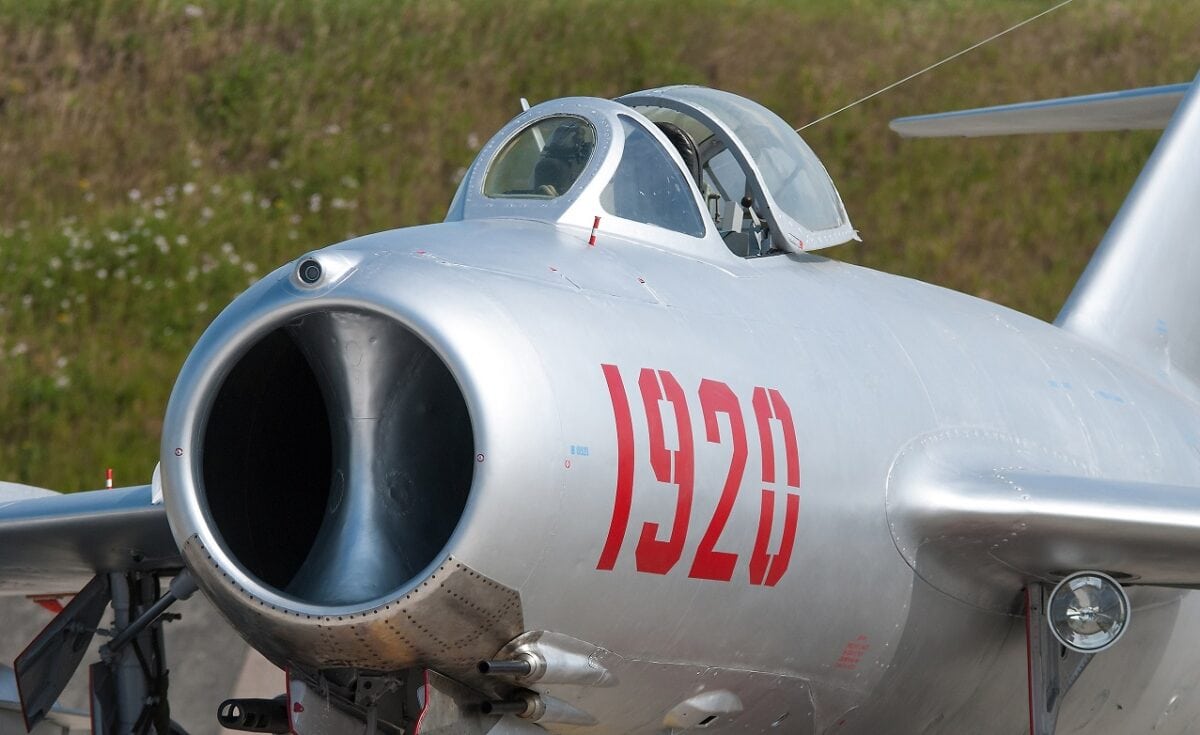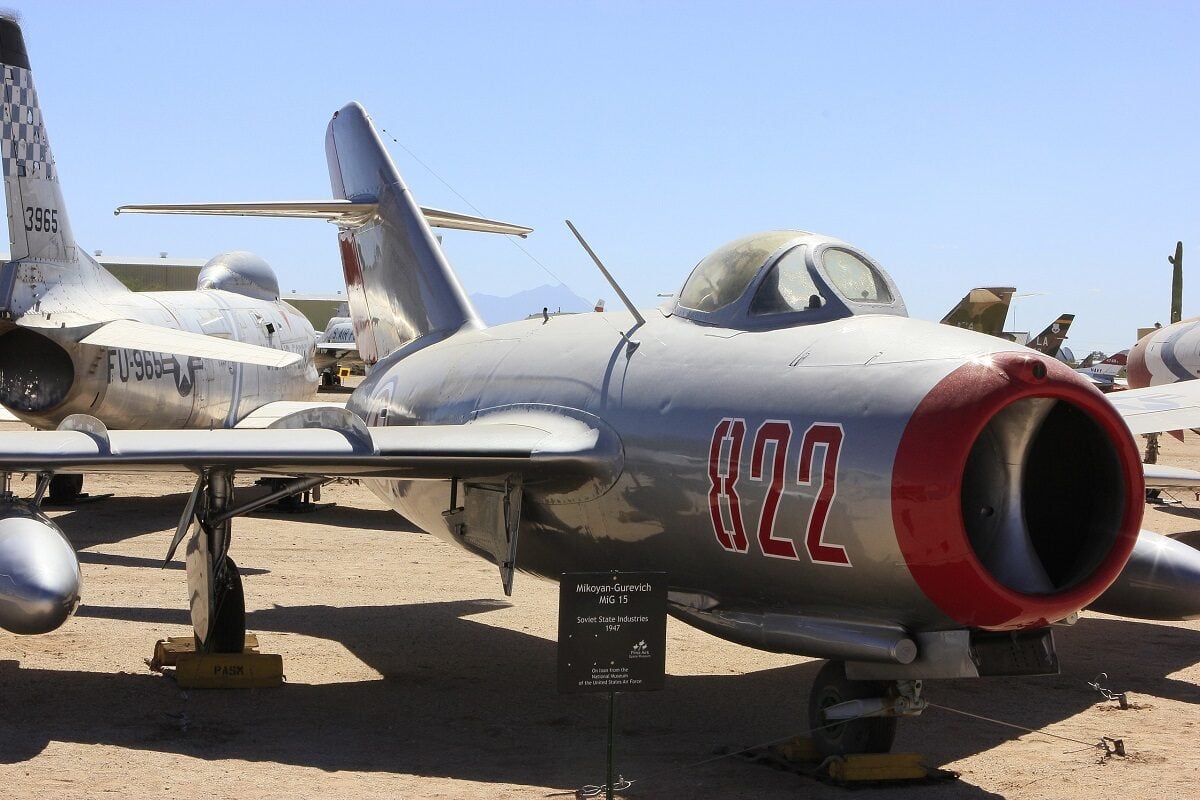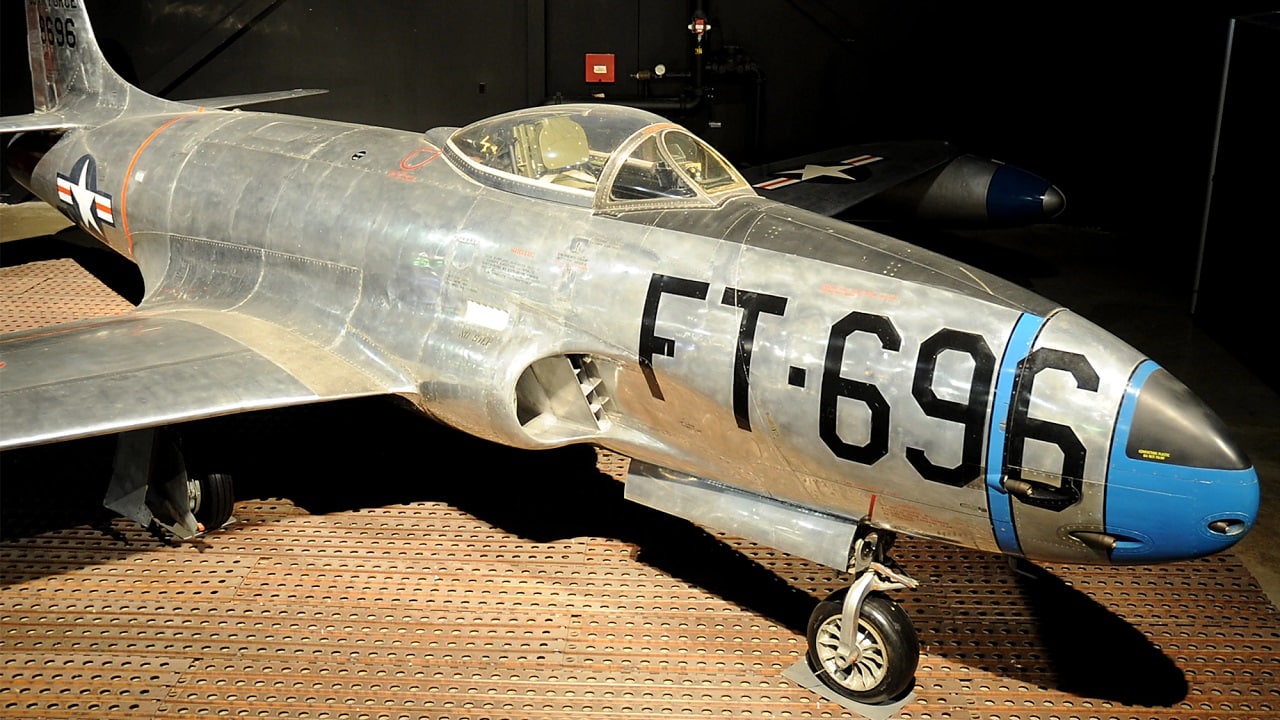F-80 Shooting Star: A Rising Star That Soon Fell – As noted in previous 19FortyFive articles on the Messerschmitt Me 262 Schwalbe (“Swallow”) and Gloster Meteor, the United States of America lagged far behind Nazi Germany and Great Britain alike when it came to the WWII-era jet fighter race.
In a rather inauspicious moment for “good old American knowhow,” America’s first jet-powered aircraft, the Bell P-59 Airacomet, never even saw combat, a sharp contrast to its Luftwaffe and RAF counterparts that engaged in air-to-air and air-to-ground combat respectively. It wasn’t until the first year of the Korean War that an American jet fighter would make up for lost time and claim some semblance of wartime bragging rights.
That history-making plane turned out to be the P-80/F-80 Shooting Star. Let’s now take a look at the meteoric rise & fall (yes, breaking out the bad puns already) of the Shooting Star.
Another Skunk Works Success
The P-80 was one of the many successful brainchildren of Lockheed’s legendary Chief Engineer Clarence “Kelly” Johnson and his iconic “Skunk Works” program, which had already established a sterling reputation due to the success of the P-38 Lightning prop-driven fighter plane during WWII. (As a sidebar, Johnson’s & Skunk Works’ most memorable creation would turn out to be the SR-71 Blackbird, which is still the world’s fastest air-breathing aircraft.)

The Lockheed P-38 Lightning was indeed the very first aircraft produced by Skunk Works and its iconic mastermind, Clarence “Kelly” Johnson.

The P-38 was originally conceived as an advanced, high-performance twin-engine interceptor. On Feb. 11, 1939, Lt. Ben Kelsey set a coast to coast record of 7 hours, 48 minutes in the sleek prototype Lightning, but crashed while landing. Despite the accident, development continued and the first of 13 service test YP-38s flew on Sept. 16, 1940. Early model P-38s experienced turbulent airflow over the tail and problems at high dive speeds, known as compressibility, but later modifications corrected these difficulties.
On this particular project, Mr. Johnson managed to keep such a tight lid on secrecy that out of 130 Lockheed employees assigned to it, only five even knew the true nature of the plane that they were working on.
Johnson submitted a design proposal in mid-June of 1943 and promised that the prototype would be ready for testing in 150 days. True to form for a no-nonsense straight-shooter of Kelly Johnson’s nature, he and his determined Skunk Works crew didn’t merely keep this promise, they actually finished a week ahead of schedule, i.e. the 143-day mark.
So it was that the prototype of the Shooting Star made her maiden flight on 8 January 1944. A total of 1,715 airframes ended up being built. The plane was officially adopted for USAAF service in March 1945, but didn’t get to see WWII combat. Tragically, on 6 August 1945 —the same day that the first atomic bomb was dropped on Hiroshima —America’s “ace of aces,” Major Richard Ira Bong, was killed in a P-80A test flight.
On a more positive note, P-80s several records in-between WWII and Korea. For starters, on 27 January 1946, Col. William Haldane Councill flew a P-80A nonstop across the U.S. to make the first transcontinental jet flight; his itinerary covered the distance from Daugherty Field (Long Beach Airport), California, to overhead LaGuardia Airport, New York, in 4 hours, 13 minutes, and 26 seconds. For good measure, on 19 June 1947 — four months before Chuck Yeager became the first man to break the sound barrier — a specially modified Shooting Star set a speed record of 624 mph (1,004 kph/Mach 0.81).
Meanwhile, from a semantics standpoint, when the Air Force became an independent branch of service on 18 September 1947, it eliminated the P (for “pursuit”) prefix in favor of F (“fighter”), ergo its P-80s were re-designated as F-80s.
Killing — And Getting Killed — Over Korea
As impressive as those interwar accomplishments were, it was during the deadly air battles of the Korean War that the Shooting Star made its most significant historical impacts.
Kelly Johnson’s jet fighter deployed to the “Land of the Morning Calm” armed with six nose-mounted Browning M-2 “Ma Deuce” .50 caliber machine guns. After missing out on the chance to fight Luftwaffe and Imperial Japanese warplanes during WWII, the Shooting Star drivers would finally get to test their battle mettle by duking it out with Communist pilots.
The F-80s scored their first aerial victories against North Korean prop-driven Yakolev Yak-9s and Ilyushin Il-10s. Most significantly, on 8 November 1950, USAF Lt. Russell J. Brown was officially credited with shooting down a North Korean — or was it Soviet-piloted(?) —MiG-15 “Fagot” in the world’s first jet-versus-jet air battle. Soviet records dispute this claim, insisting that the MiG pilot actually survived the engagement. As the saying goes, “The first casualty of war is truth,” so I’ll leave it up to our readers to decide for themselves who was telling the truth here.
In any event, F-80 pilots were credited with shooting down a total of six MiG-15s during the war. But it soon became readily apparent that the then-revolutionary swept-wing MiG-15 totally outclassed not only the Shooting Star but every other anti-communist UN Coalition warbird in service at the time. Hence it took the urgent creation and deployment of the F-86 Sabre to reestablish American air superiority over the Korean Peninsula.
Shooting Stars for the Students
Though the F-80 found itself rendered obsolescent for jet-to-jet combat by the MiG-15 and F-86 alike less than a year into the Korean conflict, that didn’t signal the end of the Shooting Star’s service life by a long shot. Instead, the warbird found a new lease on life as a two-seater student pilot trainer variant, the T-33A, serving faithfully until April 1997.

MiG-15 fighter. Image Credit: Creative Commons.

MiG-15

Image: Creative Commons.
A fair number of these history-making planes survive today. Arguably the most noteworthy survivor is “Lulu-Belle,” the XP-80 prototype that made the aforementioned maiden flight back in 1944; this venerable old lady (so to speak) is currently is storage with the Smithsonian’s National Air and Space Museum in Washington, DC.
MORE: World War III – Where Could It Start?
MORE: A U.S.-China War Over Taiwan Would Be Bloody
Christian D. Orr is a former Air Force officer, Federal law enforcement officer, and private military contractor (with assignments worked in Iraq, the United Arab Emirates, Kosovo, Japan, Germany, and the Pentagon). Chris holds a B.A. in International Relations from the University of Southern California (USC) and an M.A. in Intelligence Studies (concentration in Terrorism Studies) from American Military University (AMU). He has also been published in The Daily Torch and The Journal of Intelligence and Cyber Security. Last but not least, he is a Companion of the Order of the Naval Order of the United States (NOUS).

